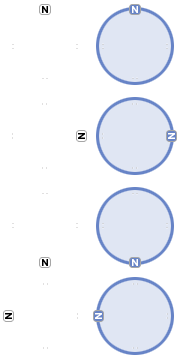
The recent BP oil spill in the Gulf Coast is shaping up to be a disaster of historical proportions--bigger, even, than the legendary 1989 Exxon Valdez incident, which saw 11 million gallons of oil dumped off the Alaska coast. And while news reports are pouring in about the immediate environmental and economic impacts, we will be feeling the effects of this spill far and wide for months--and years--to come.
Migratory birds will be among the hardest hit by the spill. Hundreds of species come from around the world to breed, winter, and rest on the Gulf Coast, and as a result, the spill could affect birds all the way from Canada to South America. The National Wildlife Federationexplains:
For species with long life spans and low reproductive rates (such as reddish egrets and least terns), acute mortality events such as this can have long-term population-level impacts if they affect a large proportion of the breeding population. This is because adults that survive do not produce young quickly enough for populations to recover quickly. Species where large proportions of populations concentrate in a few, discreet locations (including species with only a few breeding colonies and species that concentrate en masse during migration stopovers) are particularly vulnerable to these events. Compounding problems for songbirds, not normally directly affected by oil spills, is smoke billowing skywards from the burning oil that was set alight to try to minimize damage to marine life.
We noted previously that the spill will affect local fisheries that rely on abundant supplies of shrimp, crabs, and oysters. But it isn't just the fisheries that will be hit economically. Consider this: Louisiana produces 50% of the U.S. shrimp crop, 35% of the country's blue claw crabs, and 40% of its oysters. The Gulf region is responsible for a fifth of total U.S. commercial seafood production and almost three quarters of the country's shrimp production. If you think seafood is expensive now, just wait until the spill's impact really starts to sink in.
And then there are the Atlantic bluefin tuna, which are currently spawning in the Gulf. The endangered tuna's stock has fallen 90% since the 1970s. "Every little thing that impacts their spawning grounds is a concern to us," said Ken Hinman, the President of the National Coalition for Marine Conservation. "If this caused a high mortality rate, it wouldn't bode well for the future." Note: Bluefin tuna is prized for its use in sashimi.
We could go on and on--the number of migratory animals from around the world that pass through the Gulf is mind-boggling. West Indian manatees, sperm whales, loggerhead turtles, and sharks are just some of the species that could be affected by the BP spill. "Prince William Sound was a pretty pristine area before the Exxon Valdez spill, but this could have a much bigger economic impact," Hinman said.
On the energy front, the spill could obviously affect oil companies' future plans for offshore drilling. But in an interview with CBS Moneywatch, energy industry analyst Fadel Gheit speculated that the spill won't affect oil prices, since they are already inflated. The spill could, however, give a boost to the natural gas industry. That's little consolation, though, when long-term economic impacts are taken into account. Cumberland Investors' market analyst David Kotok lays out a frightening scenario:
The Gulf becomes a damaged sea for a generation. The oil slick leaks beyond the western Florida coast, enters the Gulfstream and reaches the eastern coast of the United States and beyond. Use your imagination for the rest of the damage. Monetary cost is now measured in the many hundreds of billions of dollars.
Let's hope it doesn't come to that.


